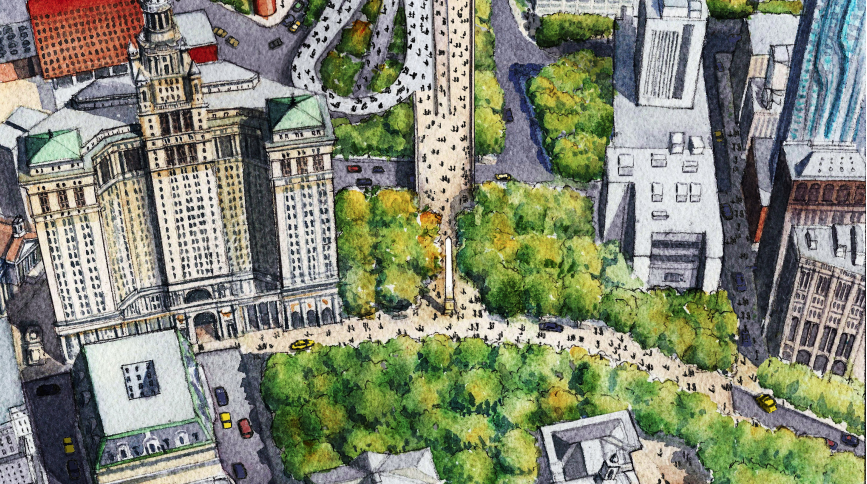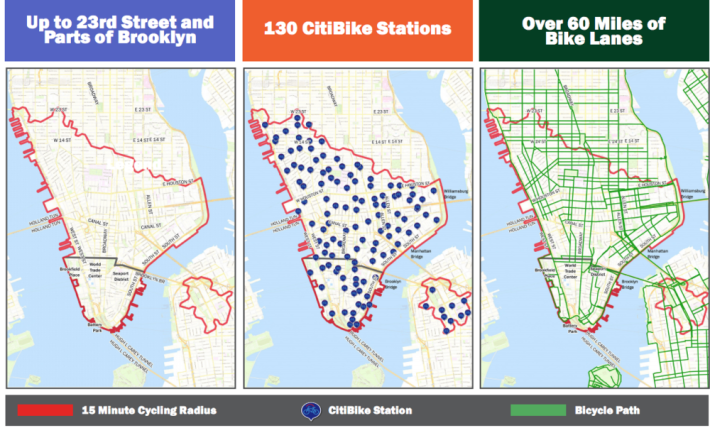Lower Manhattan residents are voting with their feet for an aggressive pedestrianization program in their neighborhood.
A new study from the Downtown Alliance reveals that 31 percent of city residents who live south of Chambers Street (or more than 15,000 people, according to recent population estimates) commute on foot or on a bike — even if they work outside of the neighborhood.
In addition, the Alliance found that 20 percent of neighborhood employees walk to work and 2 percent bike to work. The lower Manhattan BID also helpfully points out that cyclists in the neighborhood can get as far as West 23rd Street in just 15 minutes, giving potential oversleeping commuters the kind of clearance to hit the snooze a few more times when the city gets back to business as usual.
The study concludes with a call for a variety of bike-friendly ideas for lower Manhattan beyond mere bike lanes, including such helpful suggestions as using empty storefronts for secure bike parking, installing more Citi Bike stations and encouraging companies to switch from van and truck deliveries to bike delivery.
Complete streets advocates applauded the general gist, but want more.
"If there's one place in New York where it really makes sense to reclaim the vast majority of the space for pedestrians and people on bikes, it's lower Manhattan," said Transportation Alternatives spokesman Joe Cutrufo. "Driving a car is a completely inappropriate way to get around this part of the city."
As it happens, there already exists a plan to radically remake the streets in lower Manhattan east of Broadway, courtesy of the Financial District Neighborhood Association and Massengale & Co LLC. The "Make Way For Manhattan" plan put together by the community group and the architecture firm would turn a huge swathe of the Financial District into shared streets where drivers are limited to five miles per hour, expands the Bowling Green plaza and turns the Manhattan entrance of the Brooklyn Bridge into a plaza.
It's a dream that dates back to at least 2010, when the Bloomberg administration DOT recommended a move towards mostly shared streets downtown, but in the 10 years since, the city has so far only managed to turn the strip of Broadway east of the Charging Bull statue into a shared street.
The report is the latest to argue that the city's future need not equate private cars and private sector gains. Last week, Comptroller Scott Stringer suggested massive pedestrian, bike and bus improvements in order to juice the city's economy.
It's not as easy as snapping your fingers and shouting, "Begone street parking," though, according to the Downtown Alliance, even as the organization encourages increased cycling and walking in the neighborhood.
"When you're thinking about pedestrianization broadly, it's a delicate dance and balance between the people who work and live in the area, the people who commute into the area multi-modally, the businesses themselves and the tourists who come to the neighborhood," said Downtown Alliance spokesperson Andrew Breslau. "It's a particularly robust square mile that has huge working and also visiting populations."







